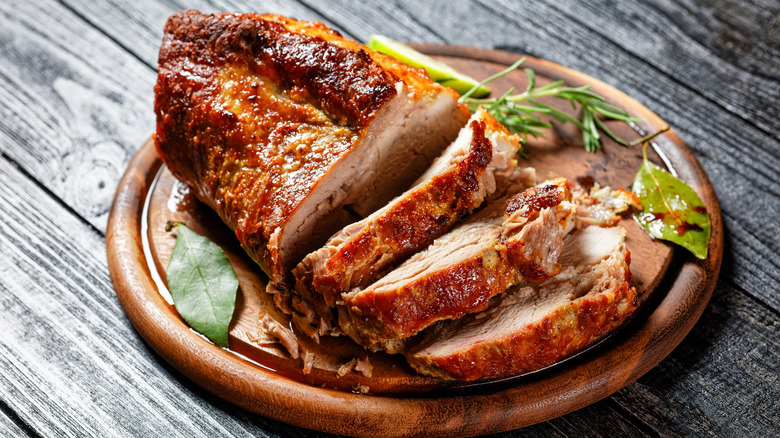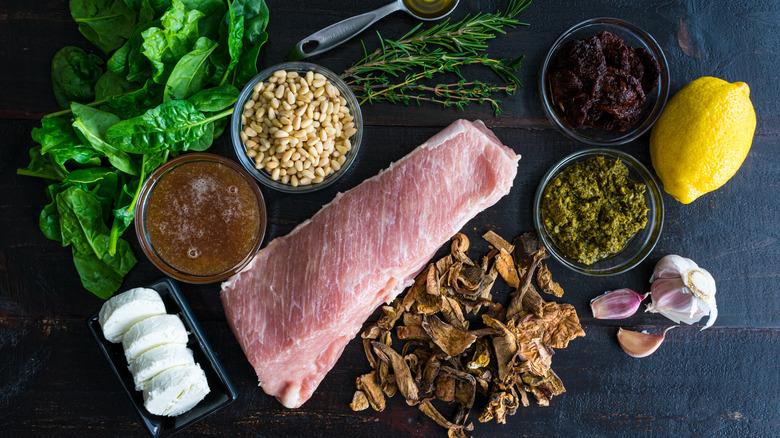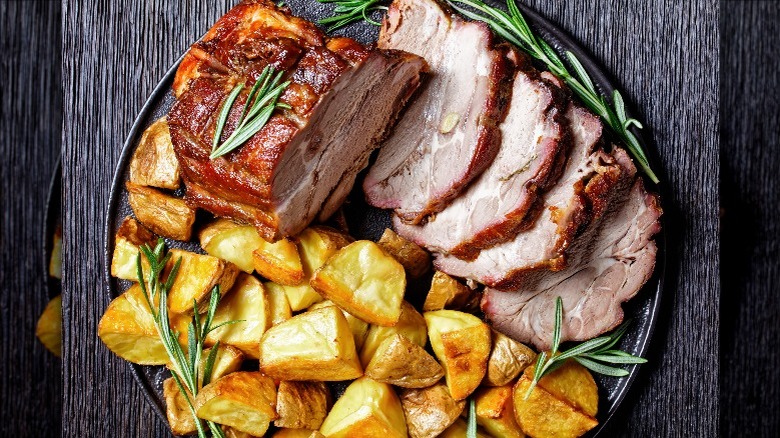The Best Slow-And-Low Method For Juicy Pork Tenderloin
When cooking pork tenderloin, achieving a succulent result is the ultimate goal for any home chef. This cut of pork is known for its tenderness and mild flavor, making it a versatile choice for a variety of seasonings and cooking methods. While numerous cooking techniques are available, the slow-and-low roasting method stands out as one of the most reliable to ensure flavorful portions. Oven-roasting gives the protein's texture time to break down and absorb the character of what you've slathered over it in prep. The roasting process is thankfully a relatively straightforward process, making it an excellent choice for weeknight dinners or special occasions.
Follow our guide, and you'll be on your way to mastering this mouthwatering method, delighting your family and friends with an unforgettable pork tenderloin experience. And if you're new to cooking this cut, don't forget to trim it properly because even pork fiends are known to skip this crucial step during prep.
It's half about preparation
Ready to get slow-and-low? You'll want to prepare by carefully selecting a high-quality cut. Look for a pork tenderloin with excellent fat marbling on its surface. The fat is not just for aesthetics; it serves a crucial purpose in basting the meat while it cooks, resulting in a more succulent and flavorful final dish. Specifically, the fat cap helps keep the boneless roast moist during cooking. Because pork tenderloin is a lean cut, it can dry out quickly if overcooked. In preparation, trim the majority of the excess fat and silver skin from the tenderloin before cooking. This technique will help seasoning penetrate the meat evenly and ensure a more uniform texture.
Once trimmed, seasoning is essential to flavoring the pork tenderloin. Create a dry rub or marinade using your favorite herbs, spices, and seasonings. Popular choices include garlic, rosemary, thyme, paprika, cumin, and brown sugar. The unique combinations of these spices help enhance pork flavor without overpowering the meat. Gently massage your choice of seasonings into the pork tenderloin, ensuring that every inch of the meat is coated evenly. For the best results, let the seasoned tenderloin rest for at least 30 minutes before cooking. This resting period allows the flavors to meld with the meat, producing a more robust and well-infused taste.
How to roast
Once your loin is prepped, preheat your oven to 275 degrees Fahrenheit, and place the seasoned pork tenderloin on a roasting pan or baking dish. Cover loosely with aluminum foil to retain moisture. Slow roast the pork for approximately one and a half to two hours or until it reaches an internal temperature of 145 degrees Fahrenheit. Use a meat thermometer to check the temperature at the thickest part of the tenderloin. Once it reaches the desired temperature, rest it for 5-10 minutes before slicing and serving. This approach allows the juices to be redistributed, ensuring a moist and tender eating experience.
As a final note, it is important to regularly monitor the internal temperature while roasting. Overcooking can result in dry meat, so a meat thermometer is essential. Remember, when cooking slow-and-low, the key to a delectable pork tenderloin is carefully selecting the cut, meticulous trimming, creative seasoning, and patience with the oven-roasted slow-and-low technique. And if there are leftovers (though we doubt there will be), there are several simple ways to reheat your pork tenderloin.


